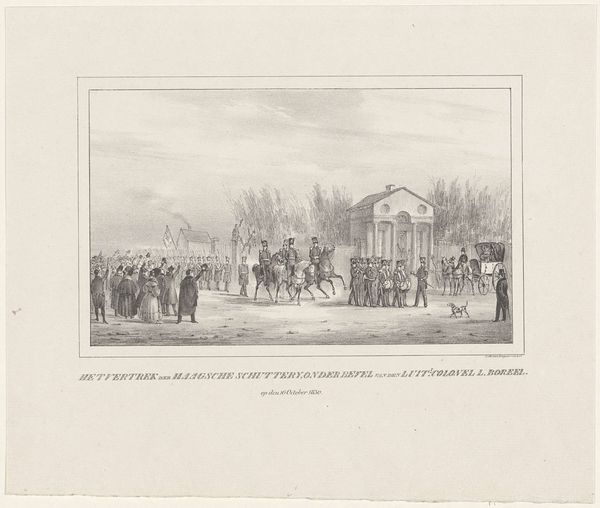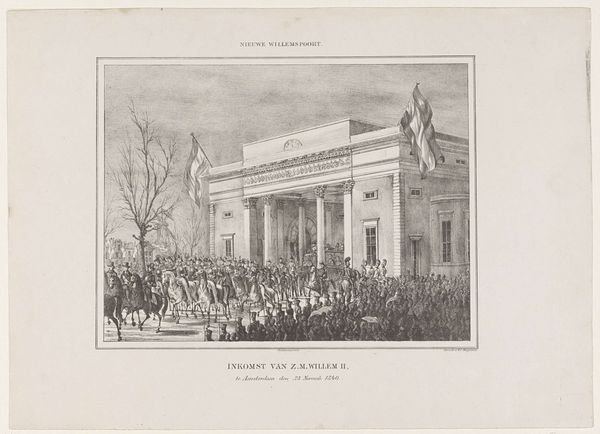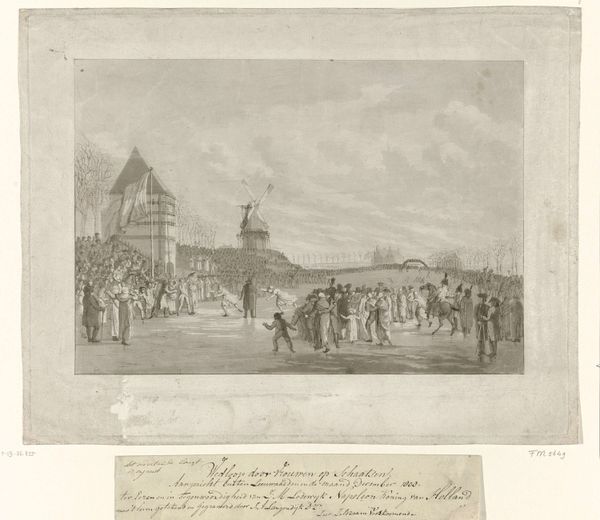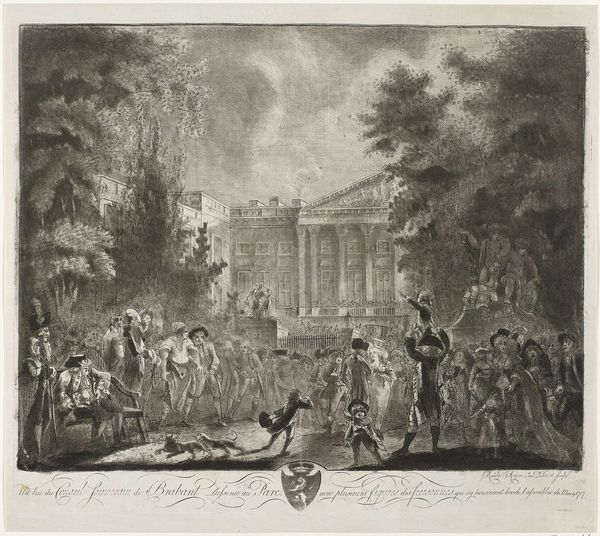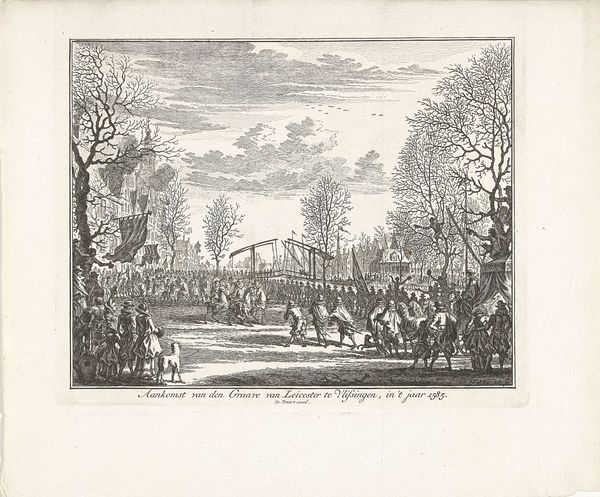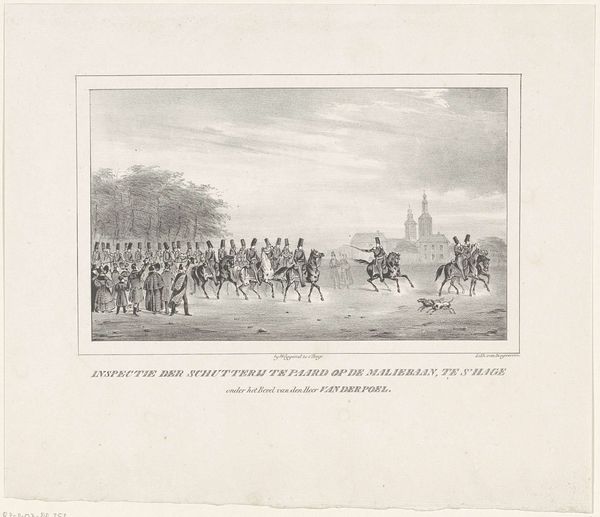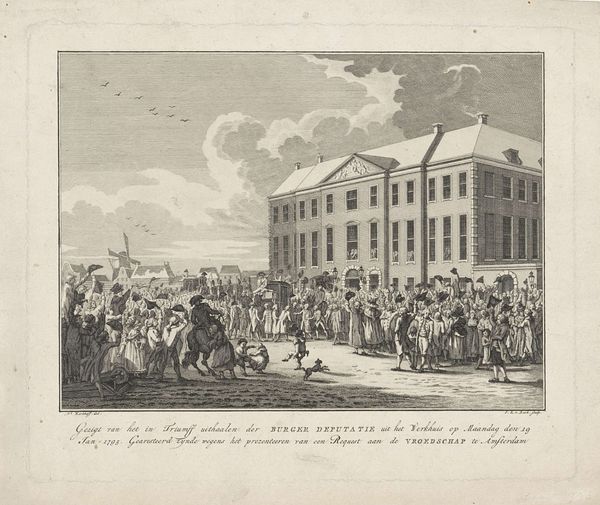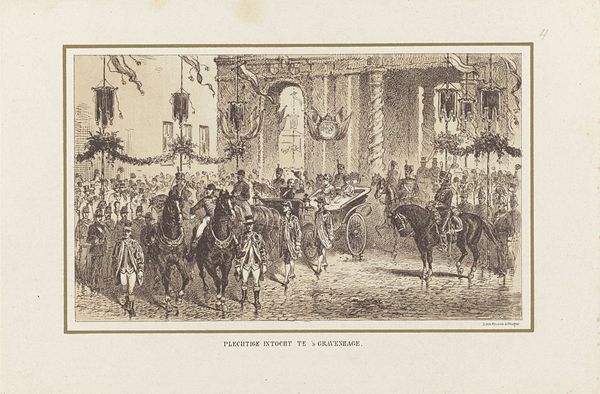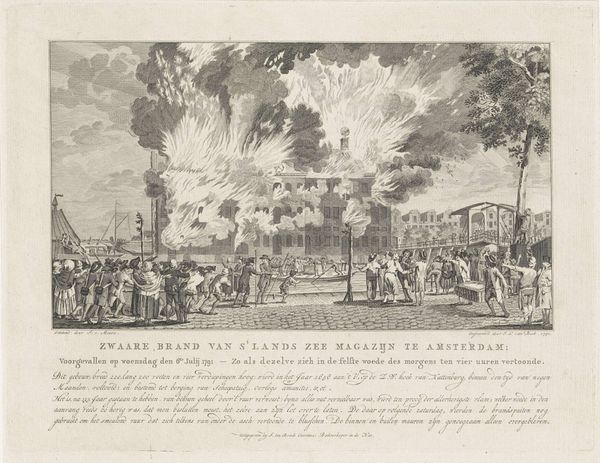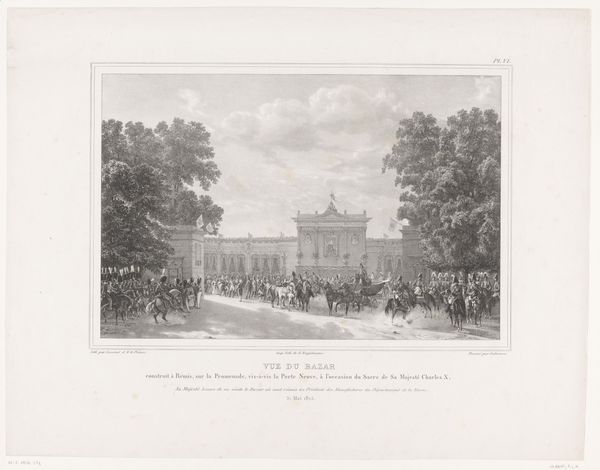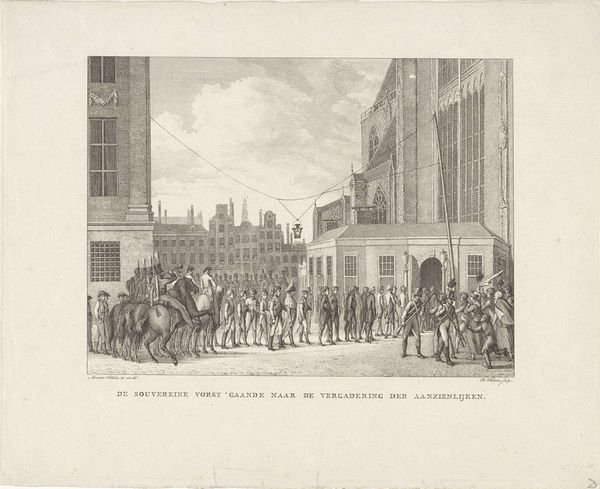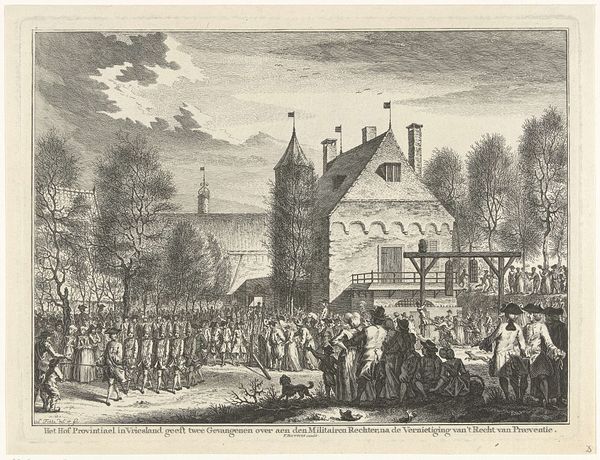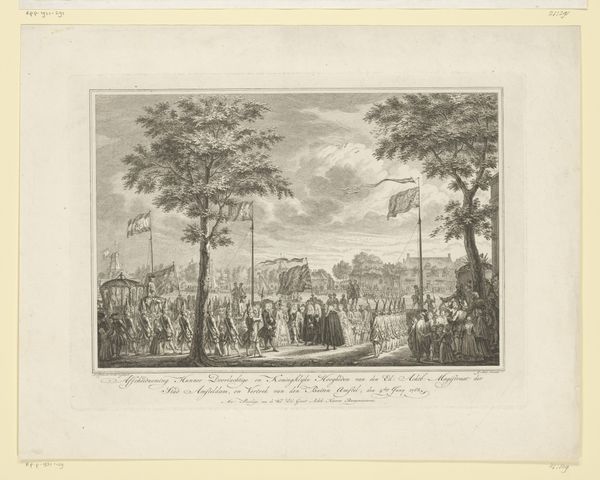
Intrede van Z.M. Koning Willem 2 te Amsterdam, door de nieuwgebouwde Willemspoort, op den 27 November 1840, daags vóór de Inhuldiging 1840
0:00
0:00
print, engraving
#
neoclacissism
#
16_19th-century
#
narrative-art
# print
#
cityscape
#
history-painting
#
engraving
#
realism
Dimensions: height 242 mm, width 340 mm
Copyright: Rijks Museum: Open Domain
Curator: Let’s delve into this engraving titled "Intrede van Z.M. Koning Willem 2 te Amsterdam" which roughly translates to "The Entry of His Majesty King Willem II into Amsterdam." It documents the event of November 27th, 1840, on the eve of his inauguration. Editor: What immediately strikes me is the balance between the rigidity of the architecture and the dynamic bustle of the crowd. The gray palette lends a feeling of official, yet restrained, jubilation. Curator: Indeed, consider the medium itself – an engraving, meticulously etched, produced on a printing press. It speaks to the means of disseminating the image of power and legitimacy during the time, reaching the hands of a wider public through mass production. Editor: The image is full of symbolic choices as well. Observe the neoclassical gate. The imposing facade screams authority while the Dutch flags assert national identity, each motif reinforcing King Willem's reign through commonly understood visual cues. Note the windmills: the Dutch landscape itself, incorporated into the royal statement. Curator: Good eye. The choice of the location itself emphasizes industry and production. See the crowd; we notice uniformed men predominantly. The depiction offers insight into social hierarchy of labor and a display of royal patronage to solidify this new regime. Editor: And speaking of solidification, there’s something deliberately historical about it. The buildings mimic classical temples which give off a conscious feeling of an important milestone—almost self-mythologizing through familiar architectural icons. Curator: Absolutely, the production process meant to create this image involved many hands and careful reproduction aimed to further shape the narrative around this historical transition in Dutch power. Editor: I’m walking away noticing how cleverly visual language shapes historical narrative and remembering, through seemingly simple images and well known cultural touchstones. Curator: And seeing how material means, from the copper plate to the press, actively shape perceptions and beliefs tied to production, consumption, and social standing.
Comments
No comments
Be the first to comment and join the conversation on the ultimate creative platform.
